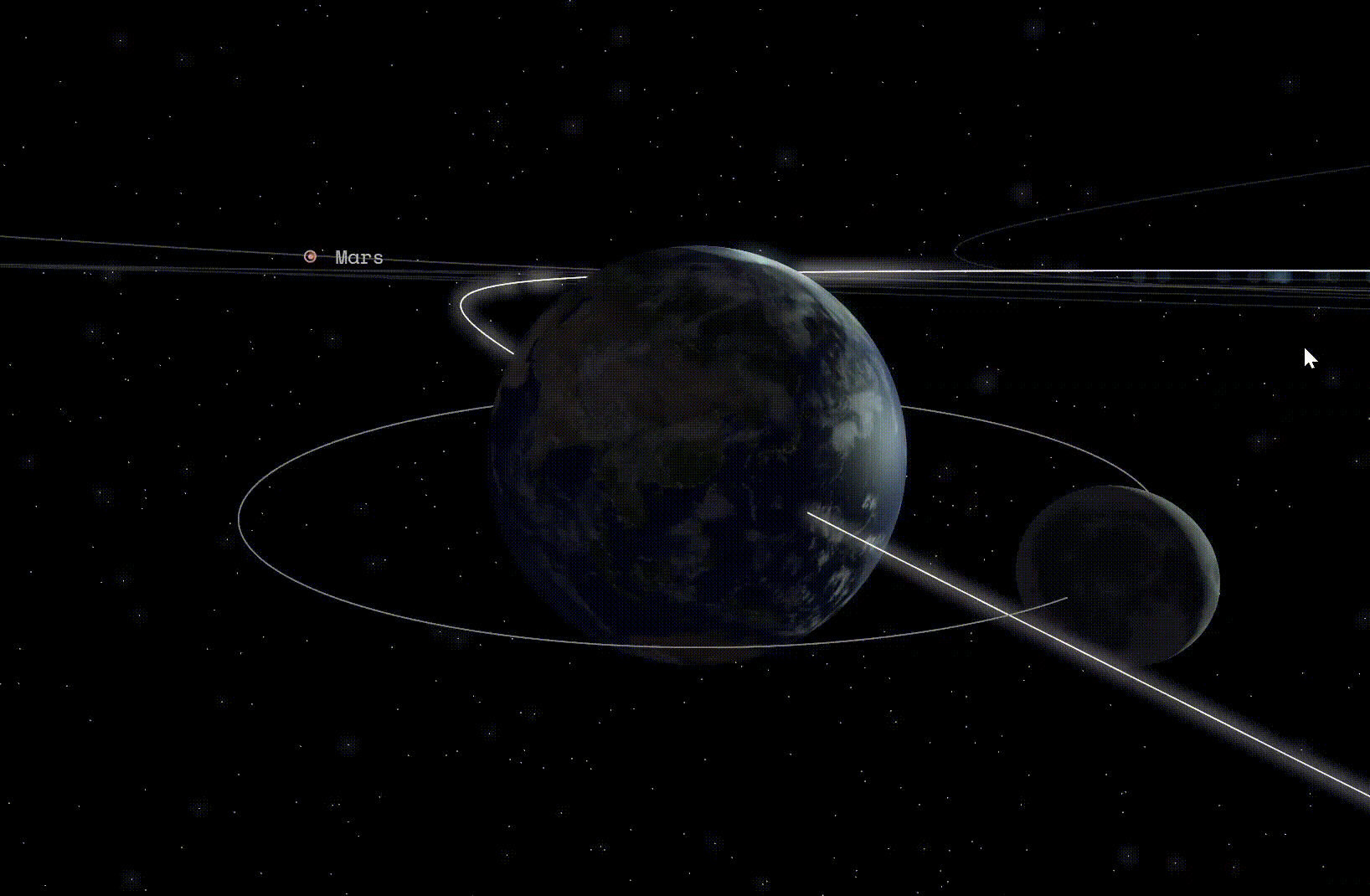As part of the NASA Space Apps 2024 Hackathon, we developed an Interactive Orrery Web App to showcase celestial bodies such as planets, Near-Earth Asteroids (NEAs), Near-Earth Comets (NECs), and Potentially Hazardous Asteroids (PHAs). This project combined astrophysics, 3D graphics, and dynamic web development to create a visually engaging and educational tool.
Explore the Orrery Web App Here!


Key Features
-
Dynamic Visualization
- Displays celestial bodies and their orbits in real time.
- Includes accurate Keplerian orbital parameters sourced from NASA databases.
- Tracks planetary orbits and NEO trajectories dynamically.
-
User Interaction
- Zoom and pan controls for a customizable viewing experience.
- Toggles for turning labels and orbital paths on or off.
- Speed controls to simulate time-lapse orbital movements.
-
Educational Value
- Informative labels for celestial objects like planets, NEAs, NECs, and PHAs.
- Simplifies complex orbital mechanics for a general audience.
- Encourages space exploration and awareness about potentially hazardous objects.
Technical Implementation
- Frontend: Built with React.js and integrated with Three.js for 3D rendering.
- Backend: Leveraged NASA’s public APIs and datasets to fetch orbital parameters and trajectory data.
- Deployment: Hosted on Vercel for seamless access and optimal performance.
Learning Outcomes
Participating in this hackathon provided valuable insights into:
- Applying Keplerian parameters for real-time orbital simulations.
- Creating interactive 3D experiences using open-source tools like Three.js.
- Designing user-friendly web apps for educational purposes.
The Orrery Web App bridges the gap between data science and public outreach, offering a platform to visualize and explore our celestial neighborhood.
Explore the project here and experience the wonders of the solar system!
